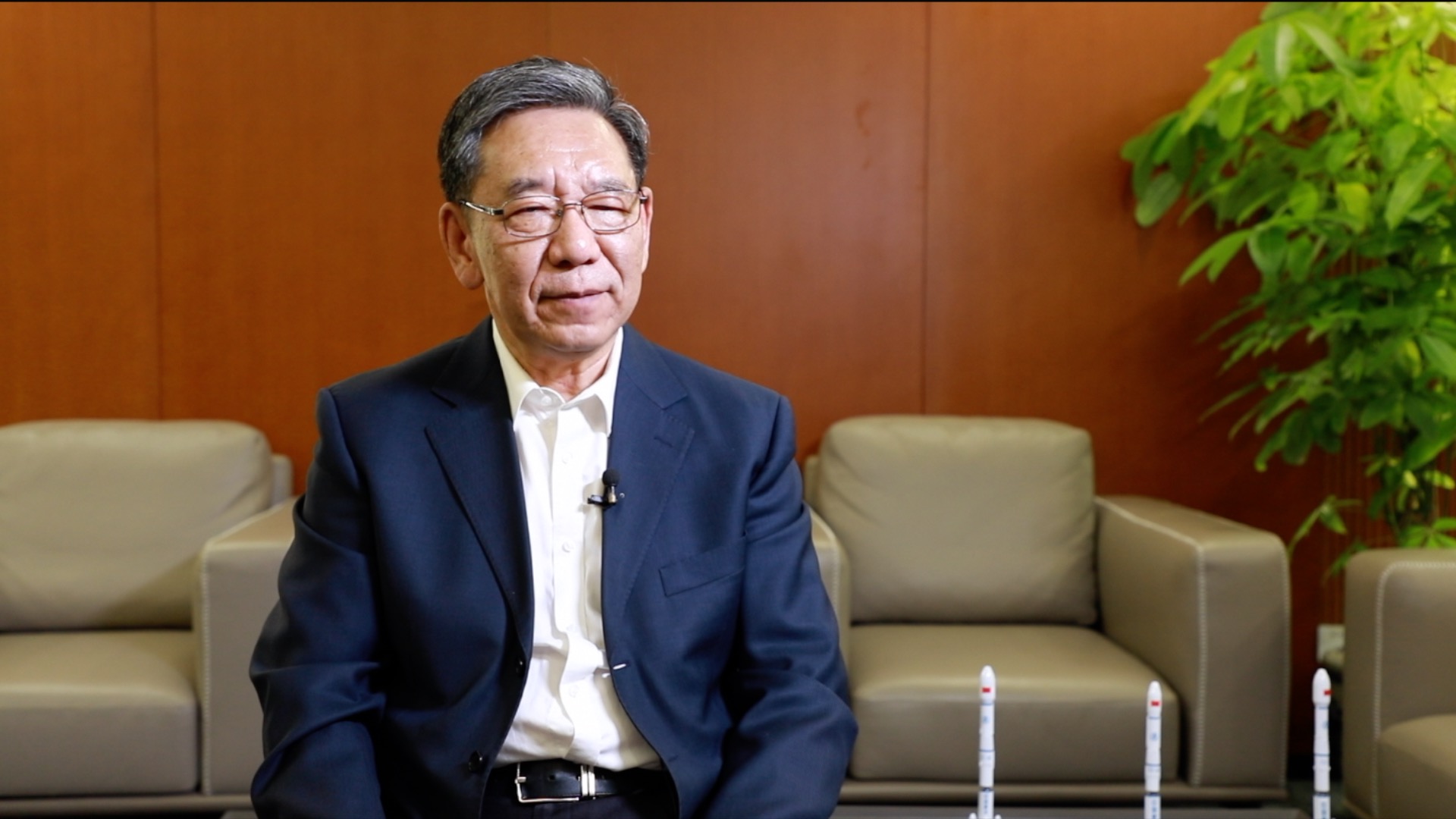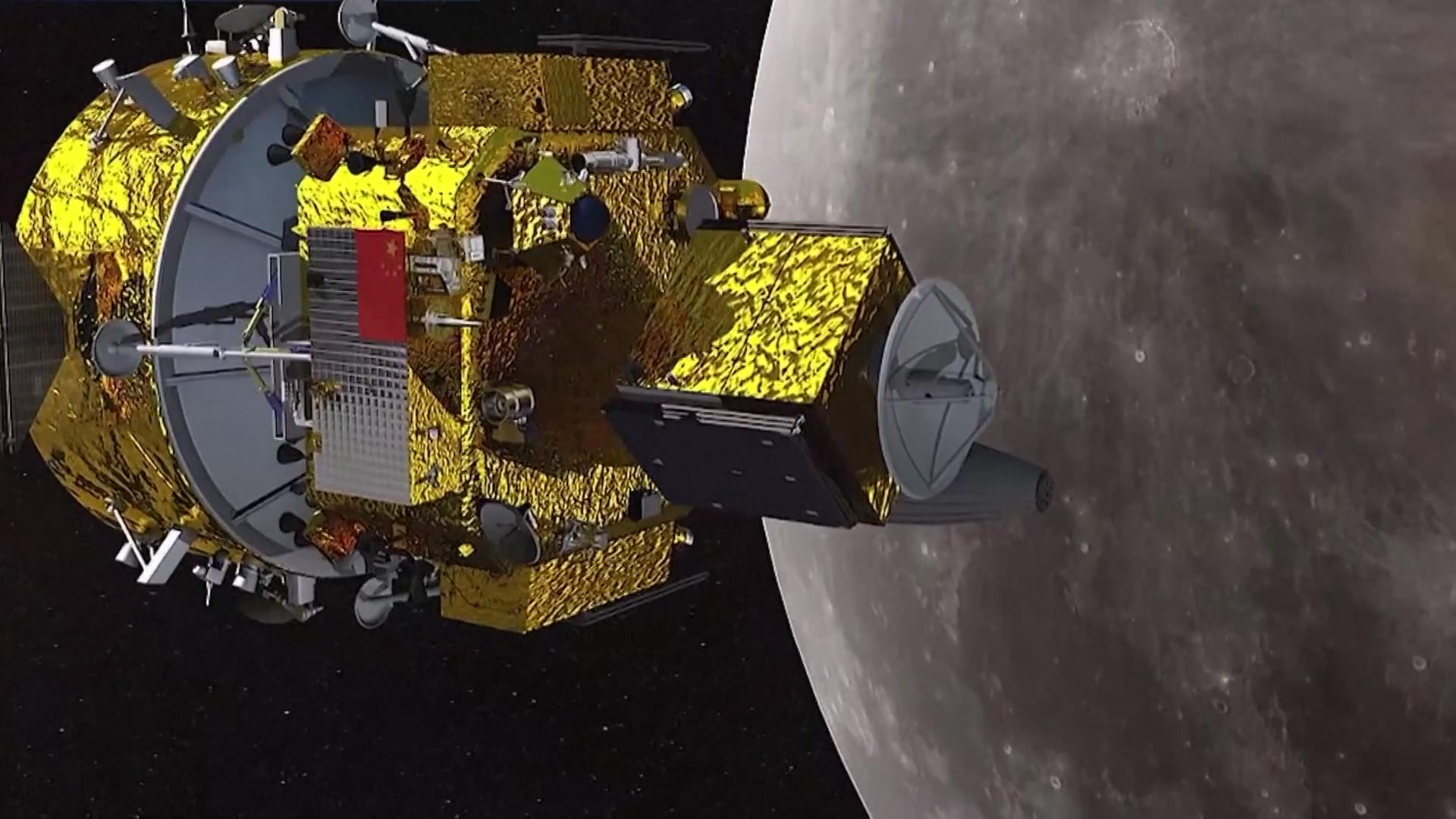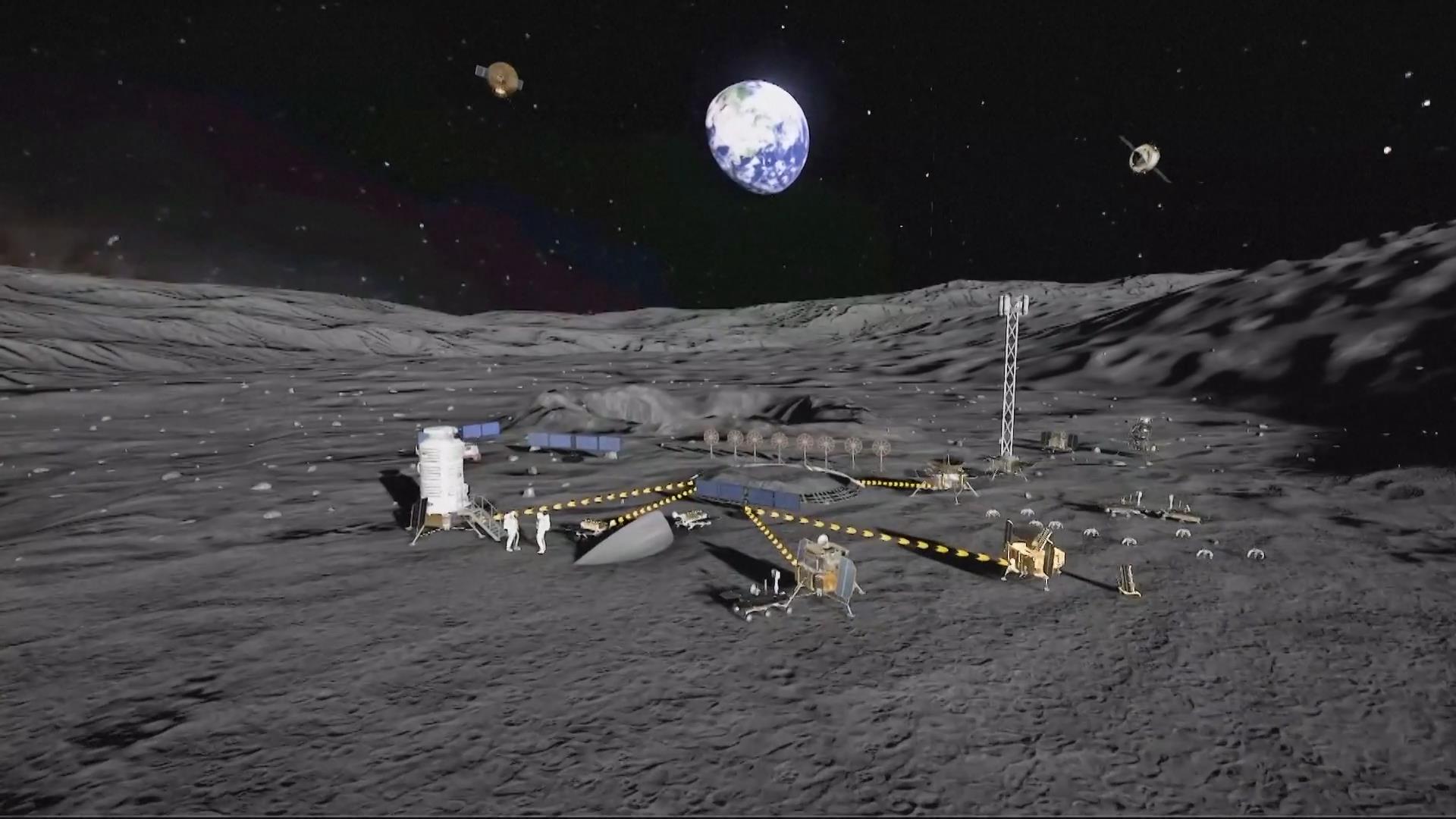02:22

China is moving faster towards the completion of the basic model of its ambitious phase-four lunar probe missions and has full confidence in leaving footprints of the Chinese people on the moon by 2030, according to the chief designer of China's lunar exploration program.
Wu Weiren, the chief designer of the lunar exploration program, made the statement in an interview with China Media Group (CMG) prior to the eighth Space Day of China, which fell on Monday this year.
"By 2030, the Chinese people will definitely be able to set foot on the moon. That's not a problem," Wu said.
A year ago, the China National Space Administration announced a plan to begin the fourth phase of lunar probe program, including the launch of three missions dubbed the Chang'e-6, Chang'e-7 and Chang'e-8, and the construction of an international lunar research station on the moon.
Wu said the Chang'e-6 mission is expected to retrieve lunar soil samples from the far side of the moon in around 2024, which will be first time humankind will collect soil samples from the far side of the earth's natural satellite.

An illustration image of the Chang'e-7 lunar probe. /CMG
An illustration image of the Chang'e-7 lunar probe. /CMG
The Chang'e-7 mission is prepared to land on the south pole of the moon, looking for traces of water.
"We hope to find water there. If water is ever found, it would be great news for human survival on the moon," Wu said.
The Chang'e-8 mission, which is planned to be launched around 2028, is designed to work with the Chang'e-7 to lay the foundation for the building of a lunar research station on the south pole of the moon, to facilitate a series of experiments on lunar resources exploration and utilization.
The plan also includes the launch of the Queqiao-2 communications relay satellite in 2024 to support upcoming landing missions at the lunar south pole and the far side of the moon.
"There's a relay satellite up there, whose main function is to solve the communication problem between the earth and them, and also support Chang'e-7 and Chang'e-8, as they will land in different locations," Wu said.
Moon-centered deep space internet
The chief designer also revealed China's plans to construct a moon-centered deep space internet to enhance connectivity and navigation for future spaceflight missions, according to the chief designer.
"We are building a satellite constellation around the moon, a system that can provide communication, navigation, and remote sensing services. After that, we can carry out future deep space exploration," said Wu.
The satellite constellation is expected to guarantee accurate navigation and smooth communication for the landing of unmanned probes and manned spacecrafts.
Besides, China has its sights set on exploring deeper space, aiming to extend the constellation to broader space areas and bring internet to the moon.
"Afterwards, we will also build a moon-centered deep space internet comprising functions such as communication, navigation, remote sensing, etc. By doing so, we will be able to turn our earth-centered space infrastructure into a moon-centered system that can be extended to a broader scope in the solar system. With the internet, the moon will have access to TV programs, games and the WiFi network. And astronauts will never get bored on the moon," he said.
International cooperation on the moon

Animation showing the basic structure of the lunar research station. /CMG
Animation showing the basic structure of the lunar research station. /CMG
The chief designer said that China welcomes partners and scientists from across the globe to join construction of the international lunar research station on the moon, as the country plans to launch multiple spaceflight missions to finish the basic structure of the station by the year 2030.
He said multiple countries and international institutions will be invited to take part.
"The international lunar research station built by China is open (to international partners). We welcome the participation of developed countries such as the United States and European countries. We also hope that BRICS countries and some underdeveloped African countries will join us. We have put forward an initiative for all to sign contracts, deals or strategic agreements of intent," he said.
China formally established its lunar exploration "Project Chang'e" in 2004. In December 2020, the Chang'e-5 lunar probe brought back 1,731 grams of samples from the moon, marking the completion of the three-step lunar exploration program of orbiting, landing and return.
(CGTN's Sun Ye also contributed to the story.)